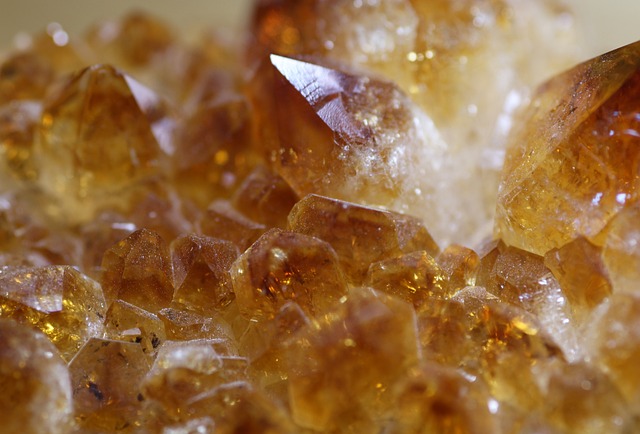Introduction
As the global economy continues to evolve, individual investors are seeking new ways to diversify their portfolios and secure their financial futures. One strategy that has gained significant attention in recent years is the concept of “How Does a Gold IRA Work When You Retire?” In this comprehensive article, we will delve into the world of gold Individual Retirement Accounts (IRAs), exploring their history, significance, and practical applications.
Understanding How Does a Gold IRA Work When You Retire?
A gold IRA is a self-directed retirement account that allows individuals to invest in physical precious metals, such as gold, silver, platinum, and palladium. These accounts are designed to provide a hedge against inflation, market volatility, and economic uncertainty, while also allowing investors to diversify their retirement portfolios.
Core Components:
- Eligibility: Only individual retirees or those approaching retirement can establish a gold IRA.
- Investment Options: The account allows investments in physical precious metals, such as coins, bars, and bullion.
- Contribution Limits: Annual contribution limits apply to prevent excessive investment.
- Tax-Deferred Growth: Earnings grow tax-deferred, allowing investors to compound their wealth over time.
Historical Context:
Gold IRAs have their roots in the 1970s, when investors sought to protect their retirement savings from the uncertainties of the time. The concept gained popularity in the early 2000s, as the global economy experienced a series of financial crises.
Global Impact and Trends
The global gold market is influenced by various factors, including:
- Central Bank Policies: Central banks’ monetary policies, such as interest rates and quantitative easing, impact gold prices.
- Economic Uncertainty: Global economic uncertainty, particularly during times of crisis or recession, drives demand for safe-haven assets like gold.
- Investment Trends: Increasing popularity of precious metals investing, driven by concerns over market volatility and inflation.
Regional Insights:
- United States: The US is the world’s largest consumer of gold, with a significant portion being used in jewelry and coins.
- Europe: European investors have historically favored gold as a safe-haven asset.
- Asia: Rapid economic growth has driven demand for gold in Asia, particularly in countries like China and India.
Economic Considerations
Gold IRAs interact with the broader economy through:
- Market Dynamics: Gold prices are influenced by supply and demand, interest rates, and inflation expectations.
- Investment Patterns: Investors’ preferences for risk-averse investments, such as gold, impact market trends.
- Role in Economic Systems: Gold serves as a store of value and a medium of exchange in economic systems.
Technological Advancements
Significant advancements have impacted the gold industry:
- Digital Payments: The rise of digital payments has reduced demand for physical coins and bars.
- Blockchain Technology: Blockchain-based solutions are being developed to improve gold trading, storage, and tracking.
- Precious Metal ETFs: Exchange-traded funds (ETFs) offer investors a convenient way to gain exposure to precious metals.
Policy and Regulation
Policies and regulations governing gold IRAs include:
- IRS Guidelines: The Internal Revenue Service provides guidance on gold IRA contributions, investment options, and tax implications.
- Securities Laws: Compliance with securities laws and regulations ensures investor protection.
- Industry Self-Regulation: Professional associations and industry bodies establish best practices for gold IRA providers.
Challenges and Criticisms
Gold IRAs face challenges from:
- Lack of Standardization: Varying standards for gold purity, weight, and quality can create uncertainty.
- Market Volatility: Gold prices are subject to market fluctuations, which may affect investor returns.
- Regulatory Uncertainty: Changes in regulations or enforcement may impact the industry.
Case Studies
In-depth case studies demonstrate successful applications of gold IRAs:
- Retirees’ Diversification: A couple diversifies their retirement portfolio by investing 10% of their assets in a gold IRA.
- Young Investors: A 25-year-old starts a gold IRA to build wealth and protect against market downturns.
Future Prospects
The future outlook for gold IRAs includes:
- Growing Demand: Increased demand from investors seeking diversification and inflation protection.
- Technological Advancements: Ongoing developments in blockchain, digital payments, and ETFs will improve the gold investment experience.
- Regulatory Clarity: Greater regulatory clarity will enhance investor confidence and drive growth.
Conclusion
In conclusion, gold IRAs offer a unique opportunity for individual investors to diversify their retirement portfolios and protect against market volatility. By understanding how these accounts work, investing in physical precious metals, and staying informed about industry trends and regulatory developments, investors can make informed decisions and achieve their long-term financial goals.
FAQ Section
Q: What is the minimum investment required for a gold IRA?
A: Typically $1,000 to $5,000, depending on the provider.
Q: Can I invest in other precious metals besides gold?
A: Yes, some gold IRAs allow investments in silver, platinum, and palladium.
Q: Are there any tax implications when investing in a gold IRA?
A: Contributions are made with pre-tax dollars, earnings grow tax-deferred, and withdrawals are taxed as ordinary income.

2024’s Top Gold IRA Providers in Wyoming: A Comprehensive Guide and Comparison
2024 sees investors increasingly opting for gold IRAs as a hedge against market volatility and infla…….
Read More
Optimizing Your Retirement with Top-Rated Gold IRA Companies in Wyoming
Gold IRA companies in Wyoming are renowned for their security, high ratings, and robust services wit…….
Read More
Optimizing Your Retirement with Top Gold IRA Companies in Wyoming
Wyoming's Gold IRA companies cater to investors seeking to diversify their retirement portfoli…….
Read More
Optimizing Retirement with Gold IRAs: Top-Rated Wyoming Firms Explored
Gold IRAs in Wyoming offer retirees an opportunity to diversify their retirement portfolios by inve…….
Read More
Optimizing Your Retirement with Top Gold IRA Companies in Wyoming
In Wyoming, residents have the opportunity to diversify their retirement portfolios by investing in…….
Read More
Optimizing Retirement with Gold IRAs: Top Companies in Wyoming
Gold IRA investors in Wyoming have access to a range of reputable companies that specialize in incor…….
Read More
Top Gold IRA Companies in Wyoming: Ratings, Services, and Legal Insights
Gold IRA companies in Wyoming offer investors a secure and advantageous platform for investing in pr…….
Read More
Gold IRA Pioneers: Top Wyoming Companies & Rolling Over Guide
401(k) alternatives like Gold IRAs allow investors to diversify their retirement portfolios with tan…….
Read More
Optimizing Retirement with Top Gold IRA Companies in Wyoming
Residents of Wyoming considering diversifying their retirement portfolios with alternative investme…….
Read More
Maximizing Retirement Savings: Top Gold IRA Companies Compared in Wyoming
In Wyoming, Gold IRA investments offer strategic advantages due to the state's tax benefits, r…….
Read More